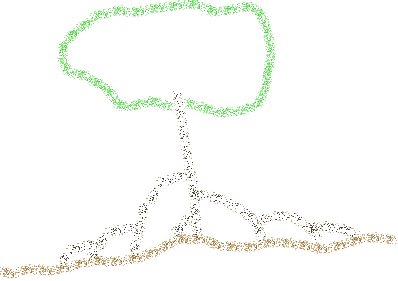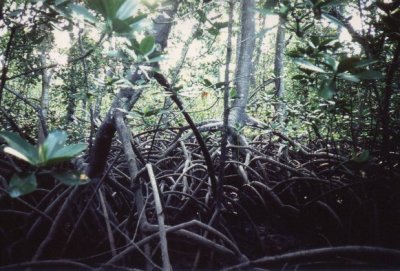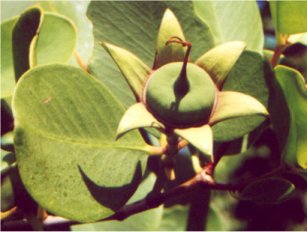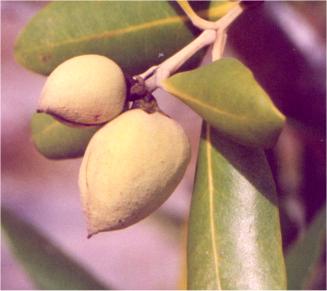
|
A field guide to Kenyan
mangroves
|
|
Trees of the seaside mangroves
see also the animals associated with this part of the forest
 |
Well developed aerial stilt roots, which allow easy recognition of this species in the field, since it is the only representative of the genus in Kenya. This species should be considered more "creekside" than seaside as they need sheltered low energy areas to grow. Crabs found near R. mucronata (in this zone): Sesarma (Sarmatium) crassum, Sesarma (Perisesarma) guttatum, Metopograpsus thukuhar, Uca annulipes, Uca chlorophthalmus, Uca tetragonon, Uca urvillei, Uca vocans, Scylla serrata, Thalamtia crenata, Epixanthus dentatus, Eurycarcinus natalensis |
 |
Occur at the most seaward edge of the mangroves, along more protected drainage creeks in muddy soils, as well as along less protected sandy beaches. Crabs found near S. alba: Grapsus fourmanoiri, Selatium elongatum, Metopograpsus thukuhar, Metopograpsus oceanicus, Metopograpsus messor, Dotilla fenestrata, Uca annulipes, Uca chlorophthalmus, Uca tetragonon, Uca urvillei, Uca vocans, Ocypode ryderi, Ocypode ceratophthalmus, Macrophthalmus spp. |
 |
The above ground root system of Avicennia marina is characterized by upright pencillike pneumatophores which originate from an underground cable root. Leaves are thin, dark green above and light colored below. Salt crystals can often be seen on the underside of leaves. Also occurs at the landward side of the mangal. Crabs found near A. marina (in this zone): Sesarma (Sesarmoides) longipes, Selatium elongatum, Sesarma (Sarmatium) crassum, Sesarma (Perisesarma) guttatum, Metopograpsus thukuhar, Metopograpsus oceanicus, Metopograpsus messor, Dotilla fenestrata, Uca annulipes, Uca chlorophthalmus, Uca tetragonon, Uca vocans, |
Landward - Mid-forest- Seaside